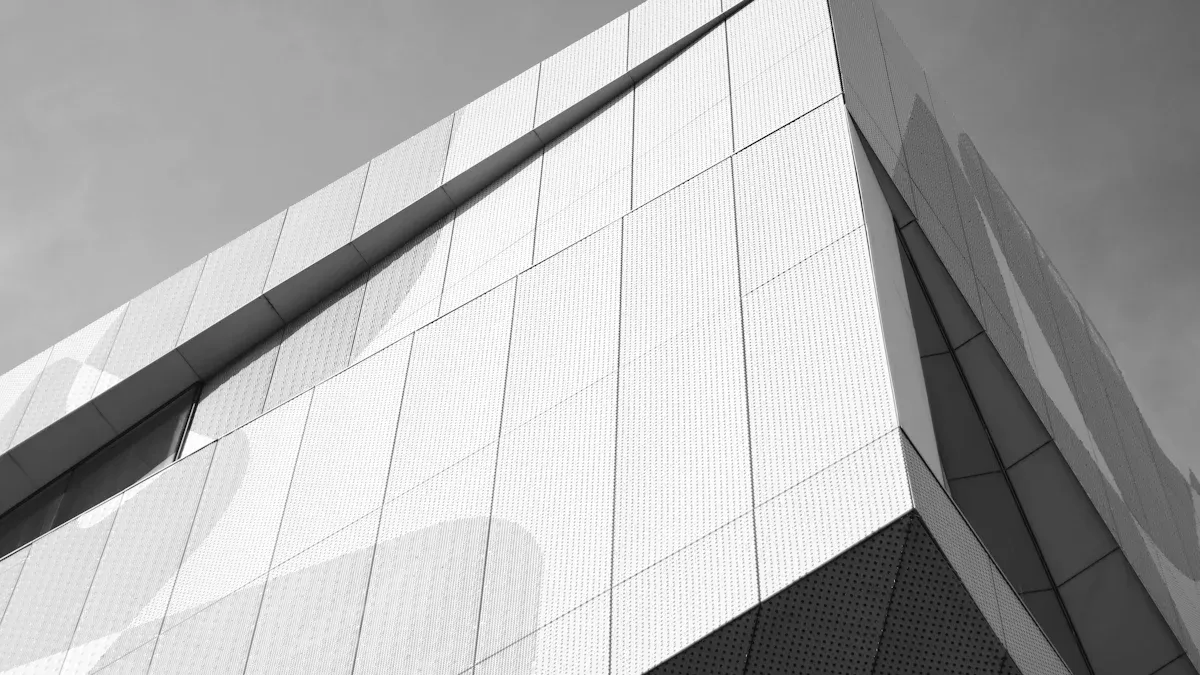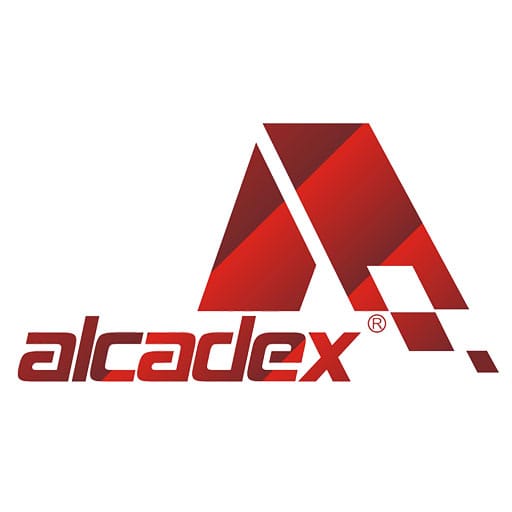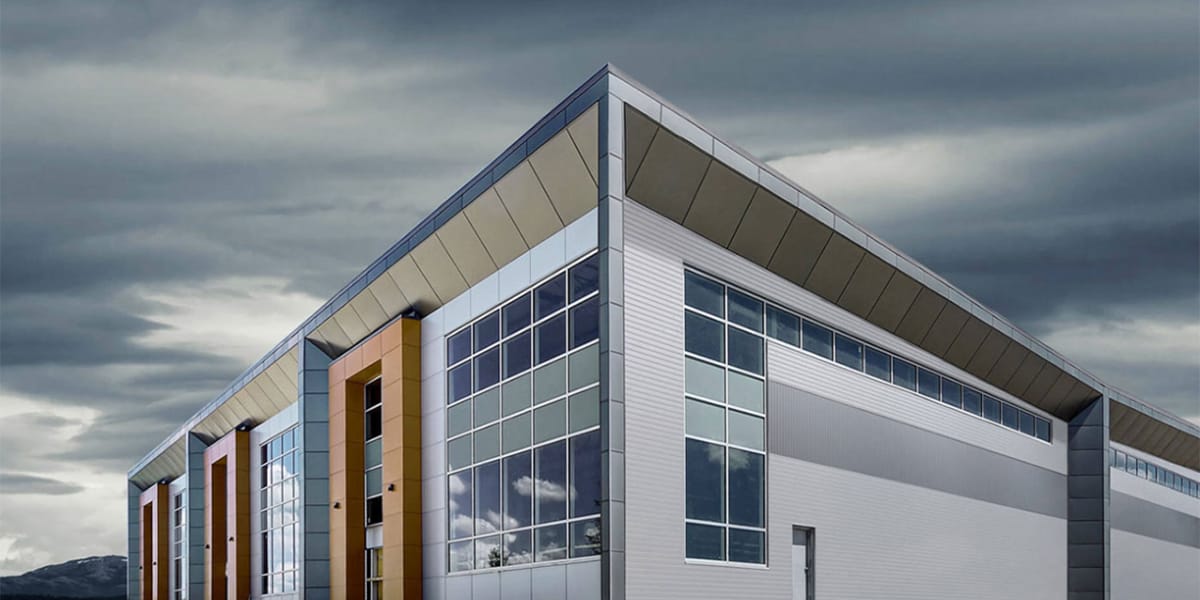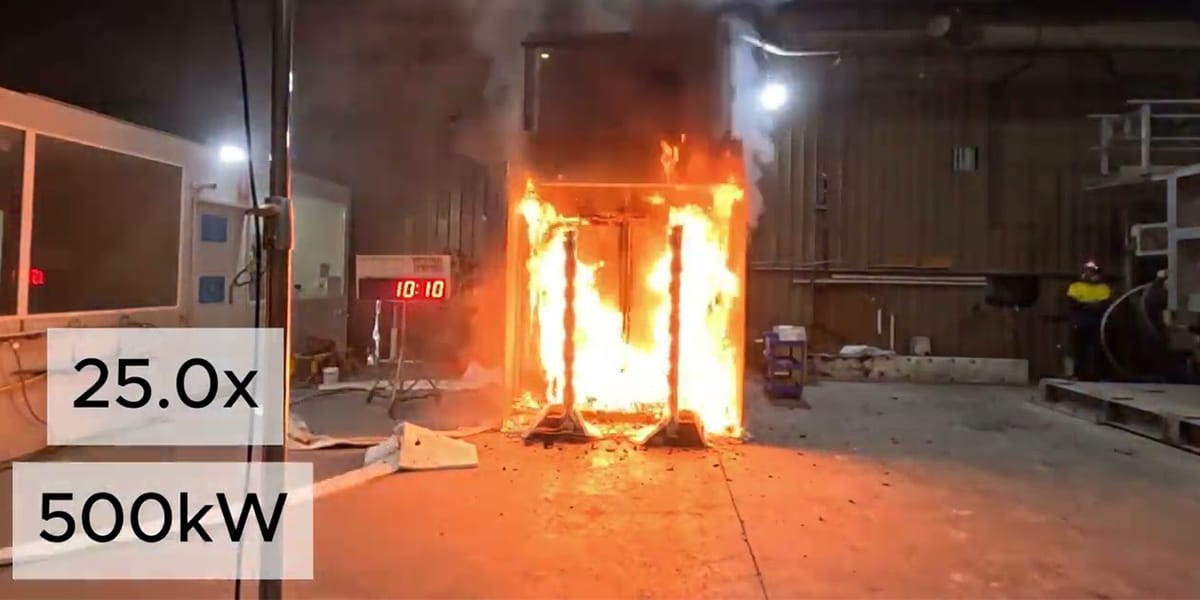
08 Aug Aluminum Composite Material Application And Uses In Construction And Design
Table of Contents
Aluminum composite material has thin aluminum sheets and a light core. This material is strong and can be used in many ways. In the last ten years, builders and designers use it more. It does not get damaged by weather. It looks modern. It also makes buildings lighter. The market for aluminum composite panels was $9.4 billion in 2024. The market is growing fast, mostly in Asia Pacific.
Metric | Value |
|---|---|
Global Market Size (2024) | |
CAGR (2024-2031) | 6.8% |
Largest Regional Market Share | Asia Pacific (40.8%) |
In recent years, more people use it because of new surface treatments, better coatings, and government rules for green buildings. Builders pick ACM for facades, signs, and inside walls. It is light and easy to shape.
Key Takeaways
Aluminum composite material is strong and light. It does not get damaged by weather. This makes it good for building facades, signs, and inside walls.
The panels can last 30 to 50 years. They do not need much care. This saves money and work over time.
ACM panels help save energy. They keep buildings warm in winter. They keep buildings cool in summer. They also make outside noise quieter.
Designers like ACM because it is easy to shape. It comes in many colors and finishes. This lets people make creative and modern buildings.
Recycling aluminum composite panels saves energy. It also cuts down on pollution. This helps green building and keeps the environment safe.
Composite Material Overview
Structure
Aluminum composite material has a special layered design. Two thin aluminum sheets cover a middle core. The core is made from polyethylene or a fire-safe material. This design makes the panel strong and light. The aluminum on the outside keeps the panel stiff and protects the core. It also gives a smooth surface for coatings that stop weather damage. The core is not heavy, so the panel is easy to move and put in place. This design helps the material stay in shape, even when pushed or pulled. Builders use these panels for curtain walls and wall designs because they are flat and steady.
Note: The three layers make the material strong but not heavy. This is why many builders use aluminum composite material today.
Properties
Aluminum composite material is known for its good qualities. It is light but also strong, so it works well in buildings. The table below shows some common features:
Property Category | Property | Typical Values / Characteristics |
|---|---|---|
Physical Properties | 0.90 – 2.30 g/cm³ | |
| Water Absorption | 0.01 – 2.0% |
Mechanical Properties | Hardness | 66 Rockwell R |
| Ultimate Tensile Strength | 30 ksi |
| Modulus of Elasticity | 1800 ksi |
Thermal Properties | Thermal Conductivity | 0.21 W/m-K |
| Operating Temperature Range | -40°F to 212°F |
Performance | Durability | Weatherable, impact resistant, easy to fabricate |
This material does not get damaged by water, chemicals, or scratches. It can handle hot and cold temperatures. Builders can cut, bend, or shape it and it stays strong. The panels keep their color and look nice for a long time, even outside. These features make aluminum composite material a good choice for inside and outside building projects.
Benefits
Durability
Aluminum composite material is very tough. Builders like it because it stands up to weather, fire, and bugs. Steel can rust if it does not have a special cover. Concrete can crack when it gets too hot or cold. But this material stays strong for a long time. The aluminum layers stop rust and keep the inside safe. This means buildings do not need many repairs. They also do not need much care. In wet or seaside places, aluminum does not rust. This makes it a smart pick. The panels can last from 30 to 50 years on buildings. If you put them in right and clean them, they last even longer.
Note: The smooth surface keeps out water and mold. Special covers help the colors stay bright for up to 20 years.
Lightweight
Aluminum composite panels are lighter than most other wall covers. Each panel weighs about 2.5 pounds for every square foot. Because they are light, workers can move and lift them easily. They do not need big machines to put them up. This makes building go faster and costs less money. The panels do not make the building heavy. This helps builders make taller or more detailed buildings. They do not have to worry about too much weight. Compared to other wall covers, these panels are the lightest.
Insulation
The layers in aluminum composite material help keep heat and cold out. The core stops heat from moving through the panel. This keeps buildings cool in summer and warm in winter. It saves energy and lowers bills. The panels also block noise from outside. This makes rooms quieter inside. In busy cities, less noise makes people feel better indoors. The material meets rules for keeping heat and sound in or out. It works well in many places.
Energy efficiency: The core helps keep rooms the same temperature.
Noise reduction: The panels block sounds from cars and streets.
Long-term luster: Special covers keep the panels looking new for years.
Design Flexibility
Architects and designers like aluminum composite material because it is easy to shape. The panels can be cut, bent, or formed into many shapes. This lets people make cool building fronts, curved walls, and special inside spaces. The material comes in many colors and looks, even ones that look like stone or wood. This helps designers match any style they want. The panels work well with other building parts. This makes it easy to make smooth designs. Because they are light, they can be used in tricky shapes without making things too heavy.
Tip: This material lets architects turn fun ideas into real buildings, from bold outsides to cool insides.
Applications
 Facades
Facades
Many architects pick aluminum composite panels for building fronts. These panels make buildings look new and protect them from weather. They keep out rain, wind, and sun. Builders use them on new and old buildings. The panels are used in ventilated facades. Air moves behind the panels to keep walls dry. This stops mold from growing. The panels help save energy by blocking heat in summer. In winter, they keep heat inside. People see these panels on malls, offices, airports, and hospitals. The panels stay flat and smooth for many years. This keeps buildings looking nice.
Tip: Using ventilated facades with these panels can lower energy bills and help buildings last longer.
Interior Cladding
Aluminum composite material panels are used for inside walls in homes and businesses. These panels are lighter than wood or steel. Workers can put them up fast. The panels keep their color and do not scratch easily. In homes, they help rooms look clean and modern. In offices, the panels block noise and help control room temperature. Hospitals and malls use these panels because they are easy to clean. They do not need much care. The panels come in many colors and finishes. Designers can match any style. The panels stay flat, so walls look neat for a long time.
Professional teams can design and install these panels for any space. The panels work well for ceilings, partitions, and even furniture. Their strong core and aluminum layers help them last a long time. They work well in busy places.
Signage
Businesses use aluminum composite panels for signs inside and outside. These panels are light, so workers can hang big signs easily. The panels do not bend or fade in sun or rain. They also resist fire and bacteria. This makes them safe for public places. Many companies pick these panels because they cost less than solid metal. They last just as long.
Attribute/Material | Aluminum Composite Panel | Solid Aluminum | Stainless Steel | PVC | Acrylic | Wood | Fluted Aluminum | Vinyl Banner |
|---|---|---|---|---|---|---|---|---|
Weight | Lightweight | Heavy | Very heavy | Light | Light | Heavy | Light | Very light |
Durability | Weatherproof, rigid, fire-rated | Rust-resistant | Extremely durable | Moderate | Can crack | Can rot | Good but can dent | Low |
Cost | Moderate | High | Very high | Low | Moderate | Moderate | Moderate | Low |
Recyclability | High | High | Durable | Moderate | Moderate | Moderate | Moderate | Low |
Graphics & Aesthetics | Sharp, vibrant, many finishes | Good | Good | Moderate | Good | Rustic | Moderate | Low |
Aluminum composite panels show bright, clear graphics. Designers can cut them into many shapes. The panels also help save energy by blocking heat. This is good for big signs on buildings.
Other Uses
Aluminum composite panels are used for more than walls and signs. Builders use them for ceilings, partitions, and furniture. The panels work well in kiosks and transport stations. Designers like the many colors and textures. This helps make unique spaces. In some projects, the panels protect surfaces and add decoration.
Ceilings in offices and malls
Partitions in hospitals and airports
Furniture and custom fixtures
Kiosks and transport shelters
Photovoltaic panel backing
Big buildings like malls, airports, and hospitals use these panels. They are strong and easy to clean. The panels do not rust and need little care. This saves money over time. In healthcare, the panels help meet safety and hygiene rules.
Note: More commercial spaces use composite material now, especially where strong, safe, and modern finishes are needed.
Installation
Methods
Builders have a few ways to put up aluminum composite material panels. The cassette or rainscreen system is the most used. Workers shape the panels into trays before bringing them to the site. They attach these trays to a steel frame on the building. Air can move behind the panels, so walls stay dry. The panels can get bigger or smaller when it is hot or cold. This system lets workers take off or swap panels if needed.
Other ways to install panels are also common:
Installation Method | Description |
|---|---|
Wet Sealant Joint | Panels use sealant in the joints to keep water out. This works for new and old buildings. |
Hanging Method | Panels hang on a frame. This lets them move and go up fast. |
Dry Gasket Joint | EPDM gaskets are used instead of sealant. This keeps panels clean and strong. |
Narrow Open Joint | Small gaps are left between the panels. |
Roof Covering | Panels cover roofs. Waterproof layers go underneath. |
Spandrel Back Panel | Opaque panels go behind glass for looks and to save energy. |
Interior Wall Cladding |
Tip: The hanging method lets panels move when it gets hot or cold. This stops damage and helps panels last longer.
Maintenance
Taking care of ACM panels helps them look nice and last longer. Clean the panels with mild soap and water to get rid of dirt. Do not use rough things that can scratch the panels. Check the panels often to find problems early. Look for fading, bending, or paint peeling. Experts should check the panels sometimes to make sure they are safe.
Wash panels with gentle soap and water.
Add new protective coatings if needed.
Store panels safely before putting them up to stop dents.
Always follow the maker’s rules and local building codes.
Doing these things helps panels last 20 to 50 years, based on how well you care for them.
Safety
Safety matters when putting up panels. Workers need hard hats to protect their heads. Safety goggles keep dust and bits out of eyes. Gloves stop cuts from sharp edges. Earplugs help with loud sounds from tools. Bright vests make workers easy to see. Dust masks or respirators help workers breathe clean air.
Clean the wall to get rid of dust, dirt, and grease.
Fix cracks or weak spots before starting work.
Use the right tools and fasteners to avoid damage.
Keep humidity and temperature steady to stop panels from bending.
Note: Using safety steps and the right gear keeps workers safe. It also helps the panels stay strong and last a long time.
Concerns
 Fire Safety
Fire Safety
Fire safety is very important for aluminum composite material in buildings. The aluminum layers can melt if it gets hotter than 660 °C. When this happens, heat can move through the panel. This can make a fire worse. If there are no special coatings, the panels can be risky in a fire. Intumescent coatings help by getting bigger when they get hot. This blocks heat and stops fire from spreading. Some coatings work better than others. One kind of coating kept heat transfer low at only 14%. It also stopped the panel from melting. But some coatings can make bad particles during a fire. Builders need to pick the right coating to keep people safe.
Many people think aluminum is always dangerous in a fire, but the real problem is the core and the coatings. New panels with fire-resistant cores and good coatings follow strict fire safety rules.
Regulations
Building codes and rules for aluminum composite material are very strict in many places. Most countries do not allow panels with polyurethane cores because they burn fast. Now, most panels use fire-retardant cores to be safe. In China, panels are put into groups by fire safety: A2 means it does not burn, B1 means it slows fire, B2 means it can burn, and B3 means it burns easily. Builders should use A2 or B1 panels for big buildings. In Europe, rules have changed over 30 years to make sure panels are safe. In North America, panels must pass tests like ASTM E119 and NFPA 285. Companies also follow rules like ASTM, EN, and ISO to show their panels are safe.
Polyurethane core panels are not allowed in many places.
Fire-resistant panels must pass tests like ASTM E119, EN 13501-1, and NFPA 285.
Using tested panels helps builders follow the law and keep people safe.
Environment
Aluminum composite material is good for the environment in many ways. These panels can be recycled. Both the aluminum outside and the core can be used again. Recycling aluminum uses only about 5% of the energy needed to make new aluminum. This saves energy and lowers greenhouse gas pollution. Companies collect old panels and recycle them into new things. The panels often have recycled parts, so there is less waste. Aluminum siding bounces sunlight away, which helps keep buildings cool and saves energy. Compared to other materials like vinyl or fiber cement, aluminum panels are better for the environment over time.
♻️ Aluminum composite panels can be recycled completely.
Recycling saves energy and cuts down on CO₂ pollution.
Companies are building recycling systems for old panels.
Picking aluminum composite material helps green building and protects the environment.
Aluminum composite material is useful in many ways. It is strong and can be used for many designs. Architects use ACM for building fronts, signs, and inside walls. This is because it is light, does not get damaged by weather, and is easy to shape.
ACM helps save energy and is good for the planet. It helps buildings follow green rules.
New fire-safe cores and better coatings make it safer and stronger.
Experts say to pick panels with certificates, look at samples, and follow local rules.
Aspect | Value for Construction and Design |
|---|---|
Durability | |
Maintenance | Needs little care, simple to clean |
Sustainability | Can be recycled, helps green building |
Builders will use ACM even more as new ideas and technology grow.
FAQ
What is the main use of aluminum composite material in buildings?
Most builders use aluminum composite material for facades. These panels cover outside walls and keep out bad weather. They also make buildings look new and stylish. Many offices, malls, and airports have these panels on their walls.
Can aluminum composite panels be recycled?
Yes, both the aluminum and the core can be recycled. Recycling uses less energy than making new aluminum. This helps the planet and supports green building.
How long do aluminum composite panels last?
Aluminum composite panels last from 30 to 50 years. If you clean and care for them, they last even longer. Most panels keep their color and shape for many years.
Are aluminum composite panels safe in a fire?
Panels with fire-resistant cores and coatings follow strict fire rules. Builders should pick panels with safety certificates. These panels help keep people safe if there is a fire.
Do aluminum composite panels need much maintenance?
No, these panels do not need much care. Washing with mild soap and water keeps them looking good. Checking for damage helps them last longer.



 Facades
Facades Fire Safety
Fire Safety